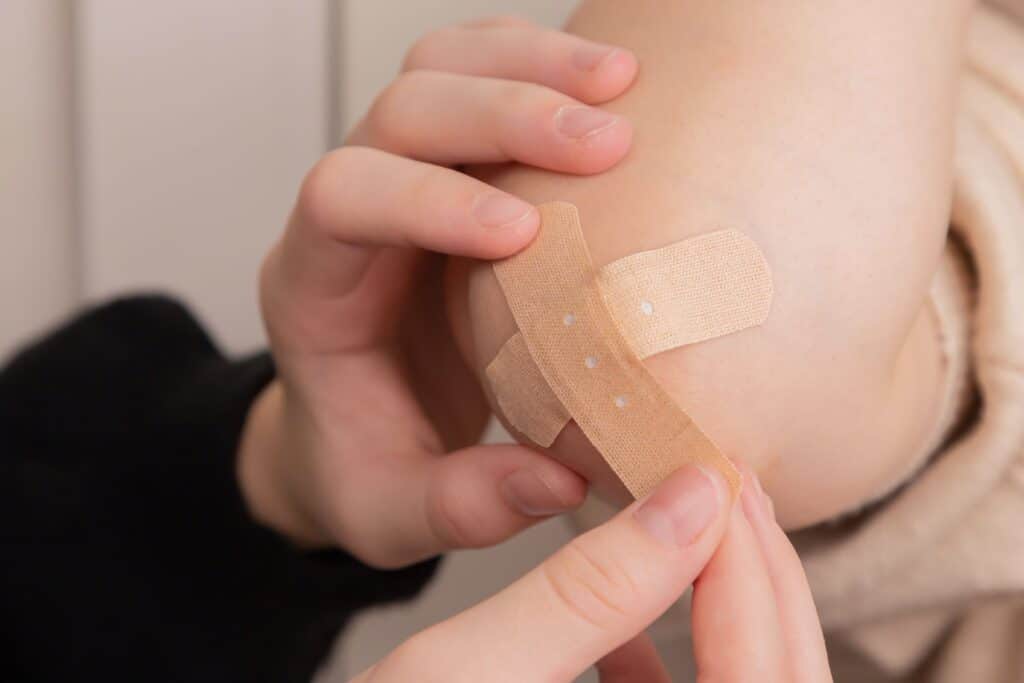5 First aid tips for minor wounds to prevent infection
5 First Aid Tips for Minor Wounds to Prevent Infection
They are called “minor wounds” for a reason. Don’t let them become major! Follow these 5 first aid tips to prevent wounds from becoming infected.

When treating a minor wound, one of the most important things is to prevent infection. A wound that’s poorly taken care of can easily fall prey to bacteria, causing even small cuts and scrapes to become much more serious.
You’ll learn more about treating all types of wounds by attending our nationally recognised HLTAID011 Provide First Aid and CPR course, but here are five quick first aid tips to treat and manage minor wounds until they heal.
1. Clean the wound
Gentle cleaning of the wound is a big start, but it won’t prevent infection. Instead, you need to make sure it’s completely free of bacteria.
The first step is to use saline solution or clean water and rinse the cut or scrape. Smaller wounds don’t take long to clean in this way, but it’s a vital first step to a germ-free cut.
Next, consider disinfecting the wound with antiseptic, but if at work, always follow your workplace policies and procedures, as some workplaces like schools and childcare centres prohibit the use of antiseptic products.
We provide a course specific for education and care first aid.
If permitted or at home, there are various antiseptic creams, sprays and ointments available. Use sparingly and make sure the product is in date.
2. Cover the wound
When this step is complete, now you need to move on to wrapping, plastering, or bandaging the wound with a non-adherent dressing.
Don’t leave it exposed to the elements, as that provides ample opportunity for germs to find their way into the cut.
This is particularly important if your wound is somewhere on the body that often encounters bacteria, such as your hands or your feet.
If you’re unsure what kind of bandage or plaster to use, consult a medical professional or pharmacist for expert advice.
3. Change wound dressings regularly
While your wound is healing, it will need to be cared for just like larger wounds. Be sure to change the dressing regularly, which ensures it stays clean and also allows you the inspect the wounds for signs of infection.
We recommend changing wound dressings:
- every 12 to 24 hours
- when washing or showering
- whenever the dressing becomes soiled.
While a dressing or plaster is a great way to help avoid infection, leaving one on too long provides an environment where bacteria will thrive, and could even stop it from healing properly.
4. Don’t pick the wound
This is a terrible habit when your wound is healing, but common – particularly with children! Be sure to avoid it, as it could have many damaging effects.
Picking at the wound exposes it when it is starting to scab and heal. This could lead to infection, which in turn could have serious consequences for your health.
If you accidentally damage the scab, then take all the same steps as you did when the wound was new, washing it, covering it and changing dressings regularly.
5. Follow medical advice
If you aren’t sure how to properly care for your small wound, contact a medical expert. They’ll be able to give you advice relevant to your unique situation and help you find the right treatment.


